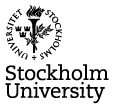
World agricultural production and climate change
Professor Rattan Lal will on Monday August 18 hold the seminar "World Agricultural Production and Climate Change".
His calculations suggest that sequestration of carbon in agricultural soils through the adoption of no-till and other green practices is cost effective and provides other benefits beside reducing atmospheric levels of carbon dioxide, such as water quality, reduced flood and drought risks, and increased soil productivity.
He states that the science of soils is sufficiently advanced to permit implementation of a market in carbon credits that can be effectively monitored and managed. Though the soil has a limited capacity to sequester carbon, it can meet much of U.S. targeted reduction for a period of 30 years. Soil carbon sequestration can also play a major role in supporting farm income and building up depleted soil resources in many countries.
About Rattan Lal
Rattan Lal is a Professor of Soil Science in the School of Environment and Natural Resources. He is the Director of the Carbon Management and Sequestration Center at Ohio State´s Ohio Agricultural Research and Development Center. Professor Lal conducts research in carbon sequestration in terrestrial ecosystems, soil dynamics and processes, and natural resources management with emphasis on food security and environmental quality in the United States, Africa, Latin America, and India. Currently his research is focused on carbon dynamics in relation to soil erosion, and soil quality as indicated by soil structure and productivity.
Time and place
Monday, August 18, 2008, 15.00-16.00
Place
Linné Hall, the Royal Swedish Academy of Sciences
Lilla Frescativägen 4
Stockholm
Vacancies | Contact | Environmental policy | Cookies
Stockholm Resilience Centre
Stockholm University, Kräftriket 2B | Phone: +46 8 674 70 70 | info@stockholmresilience.su.se
Organisation number: 202100-3062 | VAT No: SE202100306201


